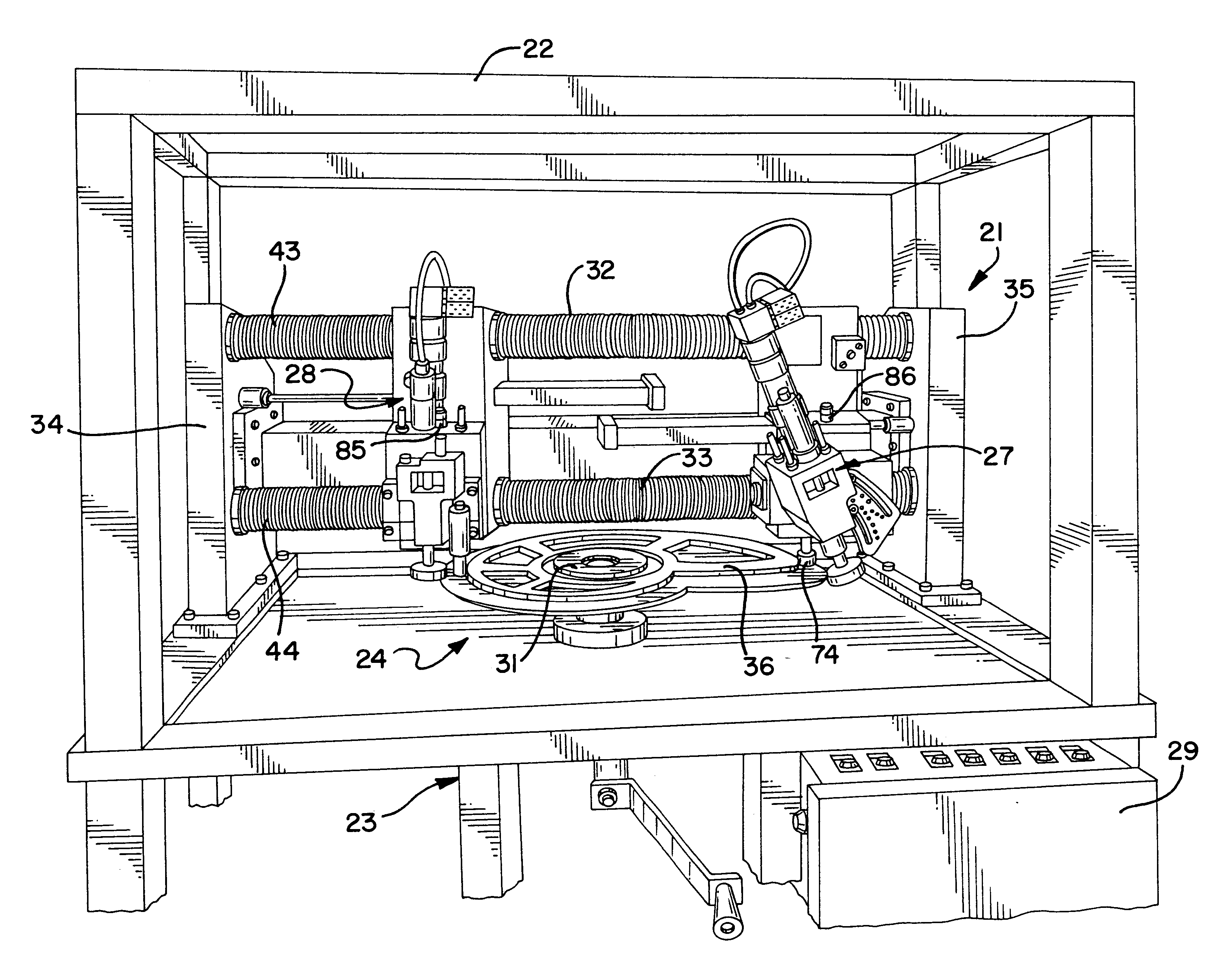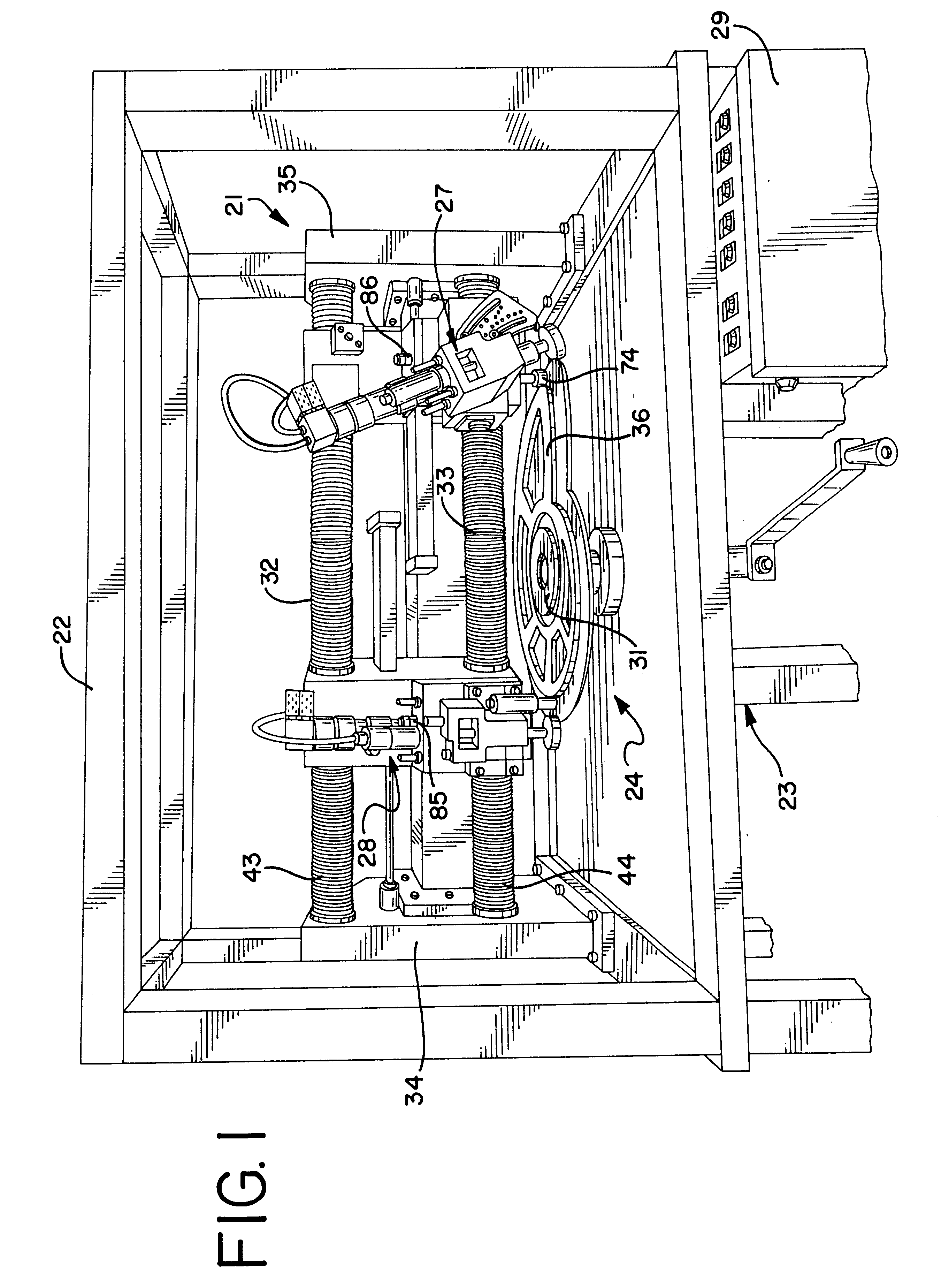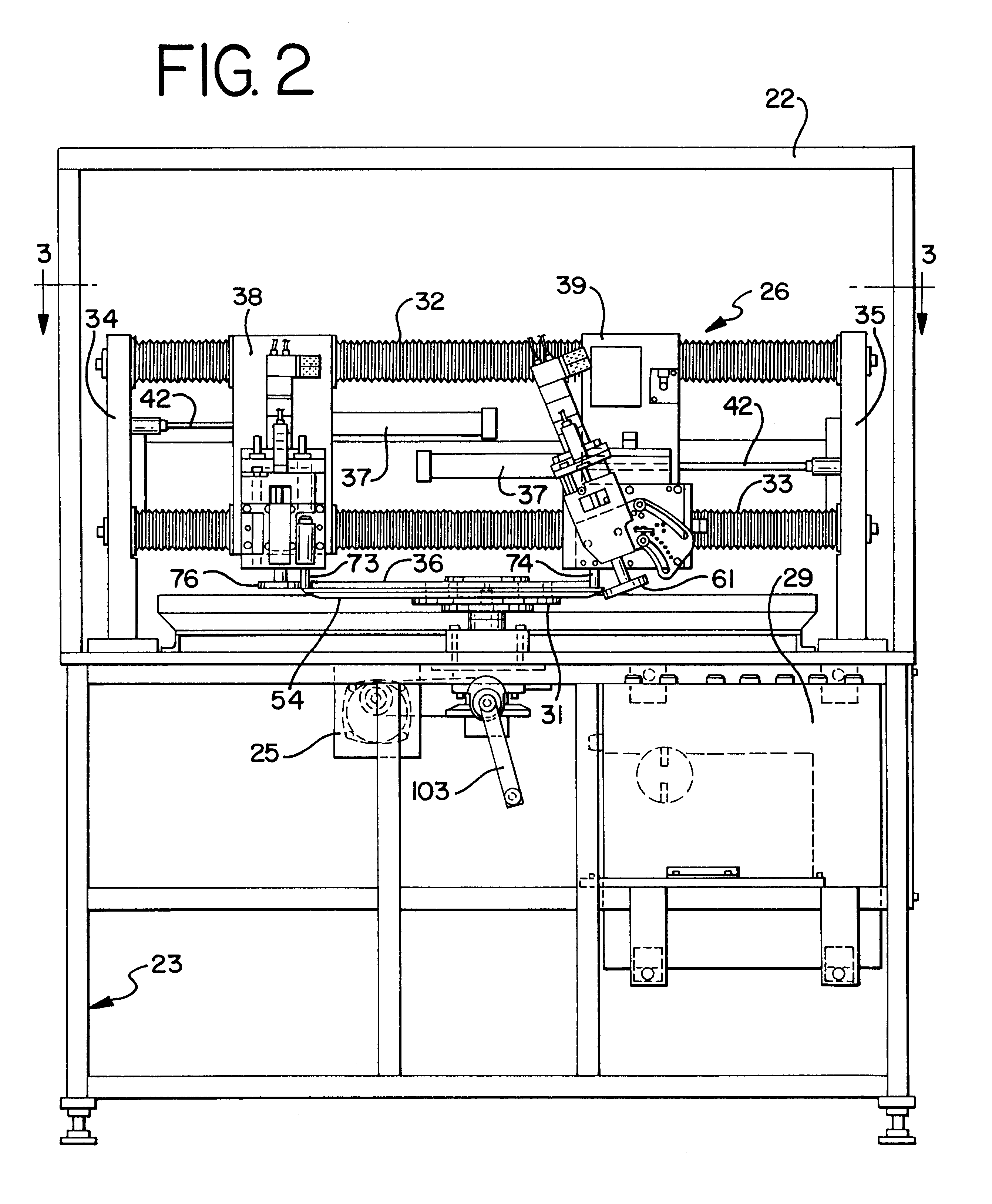Off-line honing of slicer blades
a technology of slicer blades and honing blades, which is applied in the field of off-line honing of slicer blades, can solve the problems of requiring relatively long set up time, insufficient control of blade edge parameters, and reducing the number of tools needed, so as to achieve the effect of reducing the number of tools
- Summary
- Abstract
- Description
- Claims
- Application Information
AI Technical Summary
Benefits of technology
Problems solved by technology
Method used
Image
Examples
Embodiment Construction
An off-line honer, generally designated at 21 in FIG. 1, is illustrated within a shroud or closeable cabinet, generally designated at 22, resting on a suitable support structure, generally designated at 23. This overall arrangement is illustrative of other possible structures for supporting and enclosing the off-line honer assembly. The use of an enclosure cabinet 22 is useful in avoiding undesirable dissipation of honing debris, including ground particles and lubricating oil which will be prevented from leaving the cabinet during honing procedures, as desired. Preferably, hinged panels are included on the enclosure cabinet to allow access to the honer components.
A turntable assembly, generally designated at 24, is provided for supporting and rotating the blade to be honed, ground or sharpened. It is driven by a motor assembly, generally designated at 25. Turntable assembly 25 includes a mounting plate 31 which accommodates, supports and holds a selected cam plate 36. Cam plate 36 h...
PUM
| Property | Measurement | Unit |
|---|---|---|
| acute angle | aaaaa | aaaaa |
| distance | aaaaa | aaaaa |
| size | aaaaa | aaaaa |
Abstract
Description
Claims
Application Information
 Login to View More
Login to View More - R&D
- Intellectual Property
- Life Sciences
- Materials
- Tech Scout
- Unparalleled Data Quality
- Higher Quality Content
- 60% Fewer Hallucinations
Browse by: Latest US Patents, China's latest patents, Technical Efficacy Thesaurus, Application Domain, Technology Topic, Popular Technical Reports.
© 2025 PatSnap. All rights reserved.Legal|Privacy policy|Modern Slavery Act Transparency Statement|Sitemap|About US| Contact US: help@patsnap.com



